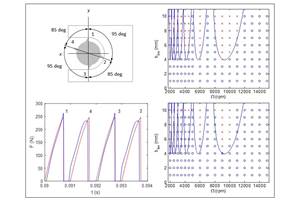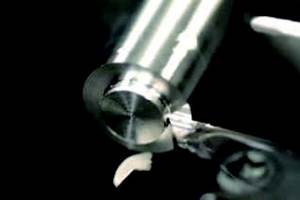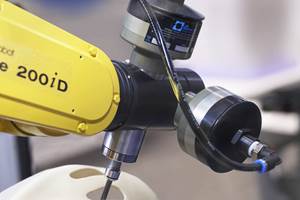Fixtures Improve Machine Performance, Product Quality And Throughput
This company previously purchased end caps and cylinder rod guides as outside components, but recently turned to Yamazen, Inc. and its line of Brother CNC tapping centers for improvement in the overall production and quality control and for a flexible manufacturing protocol on these parts.
Share




Hwacheon Machinery America, Inc.
Featured Content
View More



End caps and cylinder rod guides are produced by the hundreds at Bimba Manufacturing (Monee, Illinois), a long-time leader in cylinders for various power transmission applications.
Bimba previously purchased end caps and cylinder rod guides as outside components, but recently turned to Yamazen, Inc. (Schaumburg, Illinois) and its line of Brother CNC tapping centers for improvement in the overall production and quality control and for a flexible manufacturing protocol on these parts.
Yamazen, in turn, partnered with CD Miller (Spring Grove, Illinois), which engineered and manufactured pairs of fixtures in various bore sizes to enhance the operator efficiency and the productivity of the tapping centers.
The components produced on the tapping centers included 16 part numbers, comprising front and back caps, in cast and extruded aluminum, of 3/4-inch,
1 1/16-inch, 1 1/2-inch and 2-inch bore sizes. Production run requirements up to 900 pieces were typical. In response to the JIT strategies at Bimba, plus the 14-tool position ATC on the tapping center and its less-than-three-minute machining cycle per part, Miller faced the challenge of reducing changeover to under two minutes, thus enabling the part production to run smoothly for Bimba.
The answer, in this case, was a pair of self-contained hydraulic fixtures. The left-side fixture would be stationary, while the right-side fixture would be mounted to a Yuasa rotary indexer. Thus, all sides, front and back, would be faced, drilled, chamfered, reamed, threaded and/or bored with minimal handling by the operator.
One fixture held the blank in position for OP10, where three sides were drilled and milled, while the other fixture held the semi-finished part for OP20, the back side machining functions.
In contrast to hydraulic fixtures of the past, with fittings and hydraulic tubing where chips would hang up and often cause leakage due to exposed connection points, CD Miller designed a manifold-mounted, gundrilled plate assembly. Thus, no fittings and no hydraulic tubing were present in the machining area. CD Miller also designed and supplied the entire hydraulic manifold, comprising pump, solenoid, pressure sensors, clamping controls and interface to the machine controller M-codes.
The fixtures were designed using Pro/Engineer, a 3D solid modeling package, and all critical machining conditions were simulated through CD Miller's use of COSMOS, a finite element analysis software package. FEA assured no deformation on the aluminum parts and no collapsing of the bore. Bimba supplied drawings of both the cast and extruded parts to CD Miller as the design process began. "The entire job turned around in less than ten weeks, with no rework on any of the fixtures," according to CD Miller President Chuck Miller.
The fixtures themselves were carbon steel, with A2 tool steel roller bearings, hardened bushings and 316 stainless steel quick disconnects. All steel was black oxided, and all aluminum parts were anodized. Integral stops were designed into the fixtures for easier positioning.
A key facet of the fixture design and FEA process are machine tool modelings. The entire process is designed in 3D with the work cell setup, fixture weights, centers of gravity and the clamping force on the workpiece calculated by the software. Such FEA protocols allow complex throughput calculations to be made. The result of this overall fixture-to-machining center simulation process has been a substantial reduction in time-to-market for Bimba, according to the company; approximately half the cycle time is now required. In addition there are savings realized in workpiece handling.
Related Content
The Impact of Cutting Teeth Spacing on Machining Stability
Many cutter designs are available, and variable teeth spacing (or variable pitch) cutters can be used to influence milling stability. Let’s discuss why teeth spacing affects stability.
Read MoreBriquetting Manufacturer Tools Up for Faster Turnaround Times
To cut out laborious manual processes like hand-grinding, this briquette manufacturer revamped its machining and cutting tool arsenal for faster production.
Read MoreToolpath Improves Chip Management for Swiss-Type Lathes
This simple change to a Swiss-type turning machine’s toolpath can dramatically improve its ability to manage chips.
Read MoreHow to Accelerate Robotic Deburring & Automated Material Removal
Pairing automation with air-driven motors that push cutting tool speeds up to 65,000 RPM with no duty cycle can dramatically improve throughput and improve finishing.
Read MoreRead Next
5 Rules of Thumb for Buying CNC Machine Tools
Use these tips to carefully plan your machine tool purchases and to avoid regretting your decision later.
Read MoreRegistration Now Open for the Precision Machining Technology Show (PMTS) 2025
The precision machining industry’s premier event returns to Cleveland, OH, April 1-3.
Read MoreBuilding Out a Foundation for Student Machinists
Autodesk and Haas have teamed up to produce an introductory course for students that covers the basics of CAD, CAM and CNC while providing them with a portfolio part.
Read More


























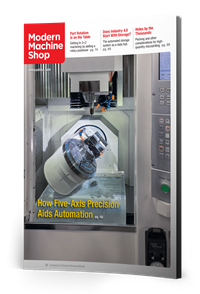






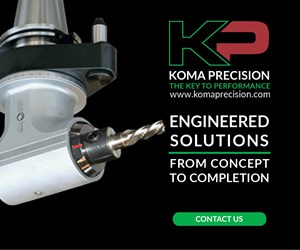

.jpg;maxWidth=300;quality=90)





